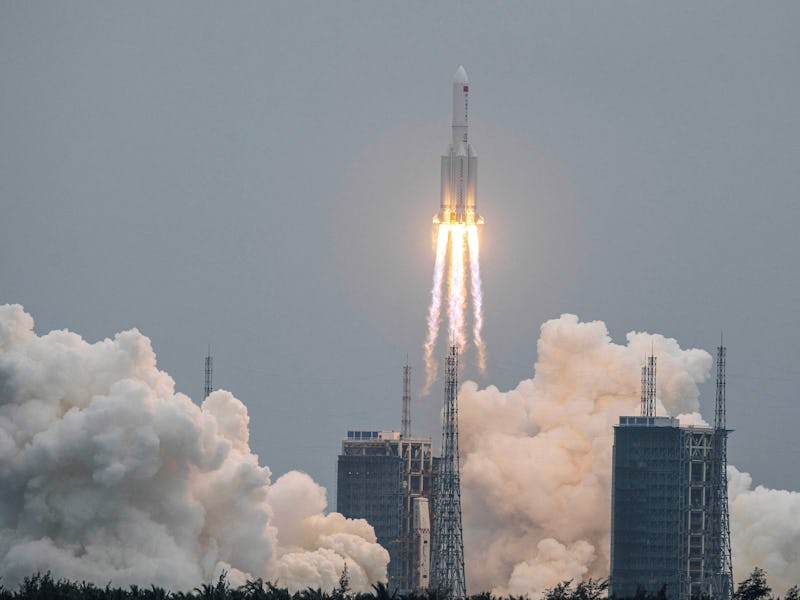Long March 5B: Another Chinese rocket makes an uncontrollable entry to Earth
Thankfully, it didn’t hit land.

Well, it happened again: A Long March 5B rocket, launched by China, made an uncontrolled re-entry into Earth’s atmosphere on July 30.
The massive rocket weighs 22.5 metric tons and is not the first of its kind to make a chaotic landing after a brief trip to space. A report from the China Manned Space Agency states that the rocket mostly burned up in the atmosphere and landed in the ocean.
But the unpredictability of an uncontrolled rocket hurtling back toward Earth once again raised alarm for scientists and government agencies.
Here’s what happened — On July 24, China launched a Long March 5B rocket to the country’s Tiangong Space Station. It carried a new laboratory module called Wentian, which was successfully attached to the space station’s core module.
The Long March 5B rocket prepares to launch on July 24, carrying a new module to China’s Tiangong Space Station.
Once the massive rocket unloaded Wentian, it fell back to Earth. Scientists and hobbyists watched the sky in nervous anticipation, as China did not release any information about the rocket’s landing trajectory.
NASA administrator Bill Nelson criticized China’s lack of warning in a press release.
“All spacefaring nations should follow established best practices, and do their part to share this type of information in advance to allow reliable predictions of potential debris impact risk,” Nelson said.
The risk of debris impact specifically applies to “heavy-lift vehicles, like the Long March 5B, which carry a significant risk of loss of life and property,” as Nelson put it.
Where is the debris? — The rocket re-entered the atmosphere over the Indian Ocean at 12:45 p.m. Eastern, according to the U.S. Space Command. China’s Xinhua News Agency reported the re-entry time at 12:55 a.m. China Standard Time, 10 minutes later than the U.S. Space Command’s estimate.
Videos posted to Twitter show Long March 5B’s remains sizzling in the atmosphere, with some observers mistaking the debris for a meteor shower.
The coordinates of the rocket debris, as reported by Xinhua, place it in Sulu Sea between the Philippines and the Island of Borneo. They are located just off the coast of the western Philippines.
This wasn’t the first time — If this incident sounds familiar, you might remember when China launched another Long March 5B rocket back in April 2021.
After the rocket carried the first module of Tiangong into orbit, it made an uncontrolled entry back down to the ground, splashing into the Indian Ocean.
Thankfully, the debris did not come close enough to land to injure anyone or destroy property. But that wasn’t the case in 2020, when the remains of another Long March 5B rocket unexpectedly hit land in Cote d’Ivoire, damaging businesses and homes in two villages.
Even though water makes up roughly 71 percent of Earth’s surface area, that doesn’t guarantee falling rockets will always land in the ocean. Space agencies sharing information about landing trajectories is crucial to keeping people from getting hurt, Nelson said.
“Doing so is critical to the responsible use of space and to ensure the safety of people here on Earth,” Nelson said.